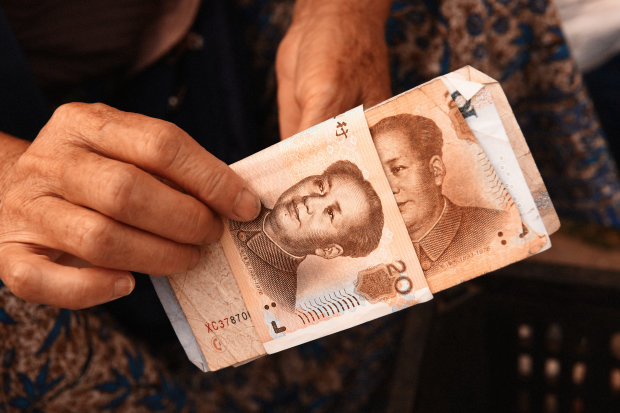Days of cheque-book growth are over in Xi's China
Don't be fooled by Beijng's fake GDP numbers. The credit-fuelled Chinese economy is bust.
Adrian Blundell-WignallColumnist
Despite what Paul Keating says, concerns about the condition of the Chinese economy, and the potential impact this may have on Australia's security, are not based on hysteria.
The Chinese economy has changed for the worse since Xi Jinping took over in late 2012. This is not entirely his fault: the easy fruit has been plucked by past leaders and he inherited the hard part. But more centralisation was never the answer.
Throwing around big ideas like Belt and Road and Made in China 2025 might sound visionary. But such talk and money guarantees nothing. China hasn’t found some new way around market discipline.

China's economy has weakened since the advent pf President Xi Jinping. Peter Braig
The situation worsened following China’s "chequebook" investment panic during the global crisis. The China credit/investment surge might have outpaced the West — and even helped us — but it added to problems that have been building for years.
By 2010 it became evident to the technocrats that the irresponsible crisis credit surge on white elephant projects had to be reined in. This has become an on-again/off-again thing ever since — China can’t seem to shake the credit habit.
The data shows why we need to be concerned.
The chart below shows aspects of China’s growth performance. It includes some key indicators of economic activity that suggest what really is happening and contradict the story purportedly told by the dubious official GDP numbers. These numbers are quickly released by the Chinese authorities soon after the end of the quarter, compared to the months required by serious statisticians in other countries.
Over-investment always results in falling returns — that’s just basic economics.
In the chart, the GDP numbers are smoothed. Highway freight, electricity output, import growth, exports and tax revenue are examples of high-frequency data showing what is happening on the ground. There is no way that the gentle linear decline in official growth to 5.8 per cent in the third quarter of 2019 is consistent with the awful underlying volatility in the economy. The same volatility in the 2015-16 period suggests zero or slightly negative growth — a similar story to what may have occurred since the second half of 2019.
In the early phases of economic development, authoritarian governments can more or less "buy" economic growth. Asia did it in the run-up to the 1998 crisis. Financial repression forces saving. Consumption as a share of GDP in China is now only 52 per cent. Banks, often with with crony and state-related parties, can lend out the saving for investment. The purest form of this is where state-owned banks are directed to lend it out to the cadres who compete to meet their growth targets.
In effect, "costs" — such as providing capital to new workers moving from the countryside to the cities — are recorded as economic growth. But this tooling-the-workers process eventually ends. And it is impossible to continue writing credit like that indefinitely.
No comments:
Post a Comment